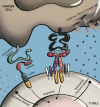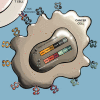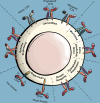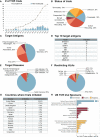Cancer Therapy With TCR-Engineered T Cells: Current Strategies, Challenges, and Prospects
- PMID: 35309357
- PMCID: PMC8928448
- DOI: 10.3389/fimmu.2022.835762
Cancer Therapy With TCR-Engineered T Cells: Current Strategies, Challenges, and Prospects
Abstract
To redirect T cells against tumor cells, T cells can be engineered ex vivo to express cancer-antigen specific T cell receptors (TCRs), generating products known as TCR-engineered T cells (TCR T). Unlike chimeric antigen receptors (CARs), TCRs recognize HLA-presented peptides derived from proteins of all cellular compartments. The use of TCR T cells for adoptive cellular therapies (ACT) has gained increased attention, especially as efforts to treat solid cancers with ACTs have intensified. In this review, we describe the differing mechanisms of T cell antigen recognition and signal transduction mediated through CARs and TCRs. We describe the classes of cancer antigens recognized by current TCR T therapies and discuss both classical and emerging pre-clinical strategies for antigen-specific TCR discovery, enhancement, and validation. Finally, we review the current landscape of clinical trials for TCR T therapy and discuss what these current results indicate for the development of future engineered TCR approaches.
Keywords: CAR; T cell receptor; TCR; TCR T; TCR-engineered T cells; adoptive cell therapy; chimeric antigen receptor.
Copyright © 2022 Shafer, Kelly and Hoyos.
Conflict of interest statement
PS and VH have submitted a patent application for TCR discovery. The remaining author declares that the research was conducted in the absence of any commercial or financial relationships that could be construed as a potential conflict of interest.
Figures





References
Publication types
MeSH terms
Substances
LinkOut - more resources
Full Text Sources
Other Literature Sources
Medical
Research Materials

